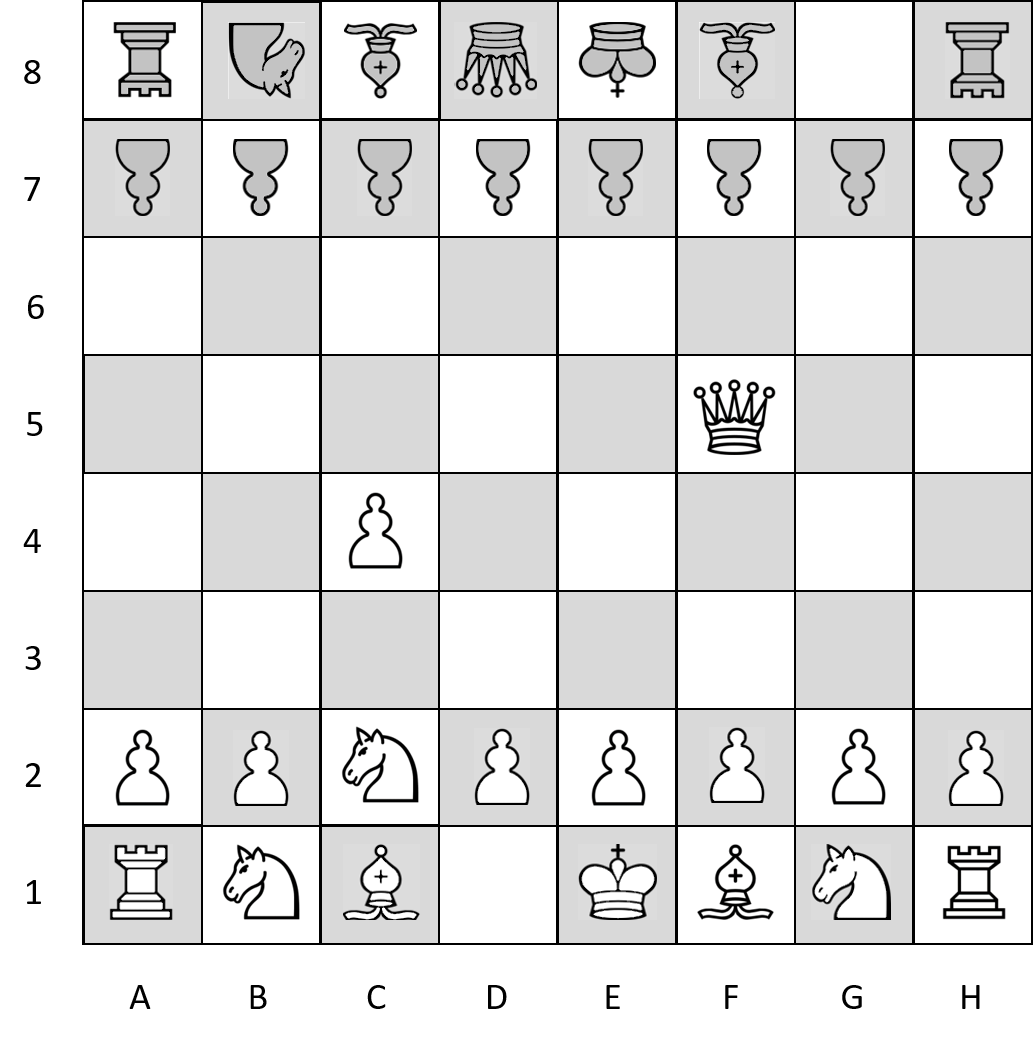Conquer II
By Gerd P. Degens
The goal of the game is to conquer the opponent's army and to add it to your own army. The game ends with the capture of the king or when the opponent's last piece has been added to your own army. In the latter case, the winner's army has doubled.
The game is played on a classic chessboard with 64 squares and the classic set of pieces. When conquering the opponent's pieces, no new pieces are created, the classic pieces set remains. This also applies to the movement possibilities of the pieces, they remain untouched.
The rules of the game are the same as the Fide rules - the exceptions are described below.
Setup
The starting lineup

Pieces
The game is played on a classic chessboard with 64 squares and the classic set of pieces.
Rules
With the exception of the following rules, the rules of classical chess (Fide rules) apply.
- A captured piece remains on the board; the position of this piece is the square from which the capturer came from (see the example below).
- On the new position of the captured piece, assimilation into the opponent's army takes place in a logical second, as it is replaced by an identical piece of the opponent (see example).
- If a situation appears where perpetual recapture becomes possible, the following applies: same moves as previous moves in the same position are excluded.
- No castling, but promotion of the pawn on ranks 1 and 8 will take place.
Pawn
The pawn always moves one square forward and can capture opposing pieces. If there is an opponent's piece on the second square forward, it can be captured if there is no piece in between.
The pawn's move diagram looks like this:

An example to illustrate the capture of an opponent's piece:
Qc2 Nf5

A captured piece remains on the board; the position of this piece is the square from which the capturer came from - in this case c2.

On the new position of the captured piece, assimilation into the opponent's army takes place in a logical second, as it is replaced by an identical piece of the opponent - see c2.

 This 'user submitted' page is a collaboration between the posting user and the Chess Variant Pages. Registered contributors to the Chess Variant Pages have the ability to post their own works, subject to review and editing by the Chess Variant Pages Editorial Staff.
This 'user submitted' page is a collaboration between the posting user and the Chess Variant Pages. Registered contributors to the Chess Variant Pages have the ability to post their own works, subject to review and editing by the Chess Variant Pages Editorial Staff.
By Gerd P. Degens.
Last revised by Gerd Degens.
Web page created: 2023-12-25. Web page last updated: 2023-12-25
